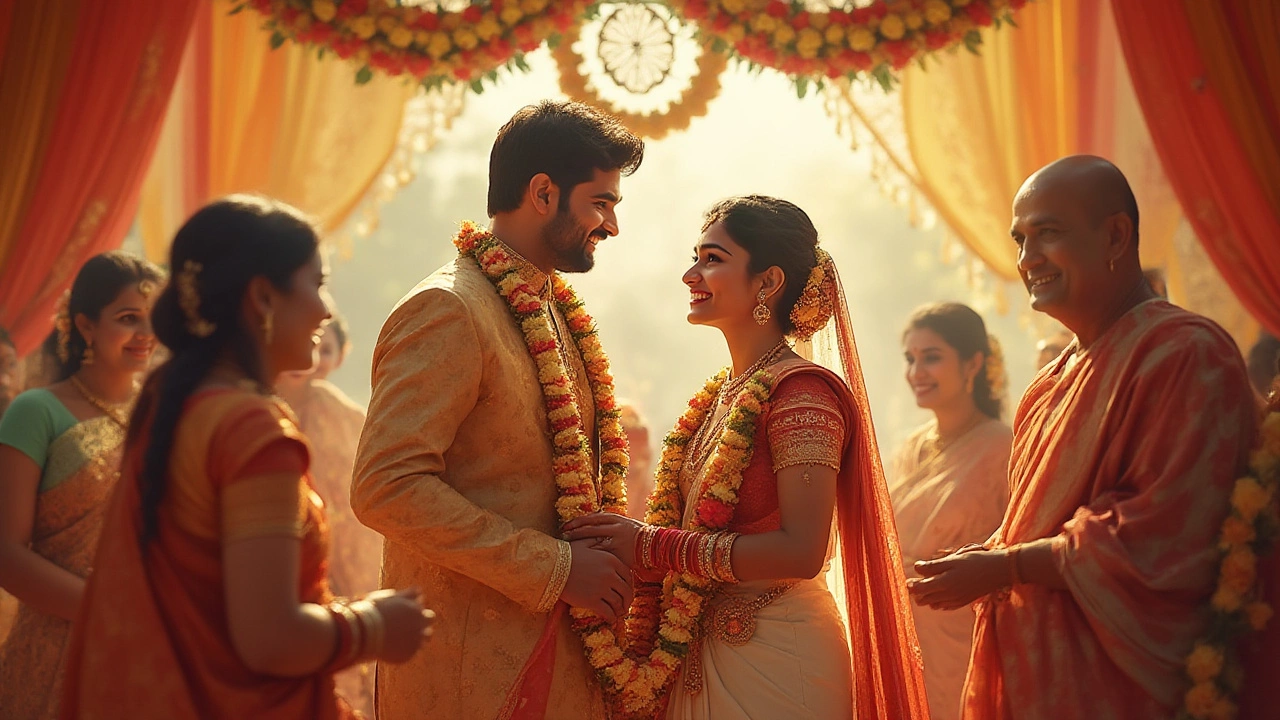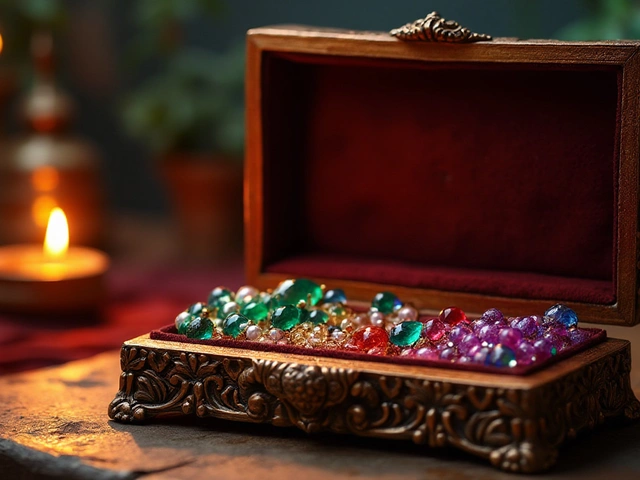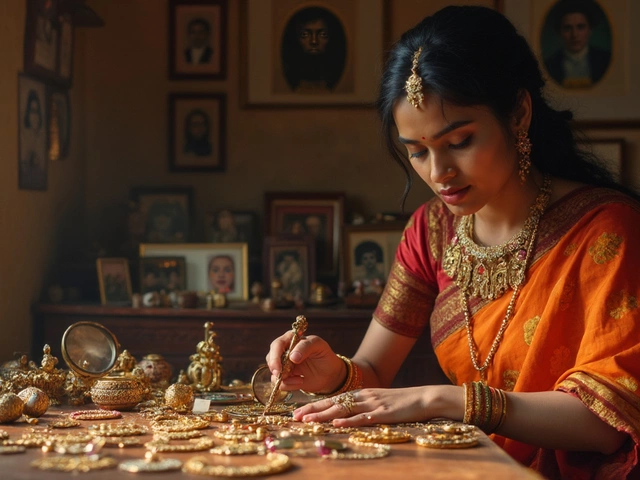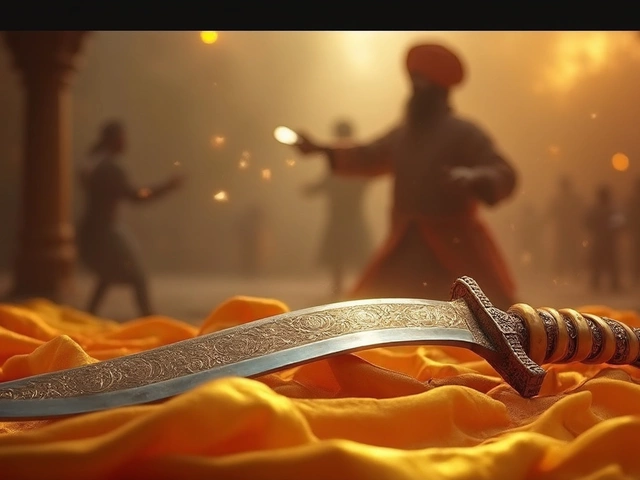Ask anyone at a traditional Hindu wedding about the mangalsutra, and the conversation instantly warms up. This black-and-gold beaded necklace isn’t just an accessory—it’s a loud, proud symbol of a woman’s marital status. But if you’re searching for the word “mangalsutra” in the Bible, well, you’ll be searching for a very long time. There’s no mention of it anywhere in Christian scriptures. Yet, the question refuses to go away—with so many mixed-background weddings, blended families, and couples asking what the Bible really says about marriage jewelry, curiosity keeps bubbling up.
The Mangalsutra: A Deeply Indian Symbol
The mangalsutra has been around for hundreds of years in Indian culture. During the Hindu wedding ceremony, the groom ties the mangalsutra around the bride’s neck, with prayers and families watching closely. It doesn’t just mean love—it's a marker of respect, trust, and lifelong partnership. Each region in India has its own twist. Sometimes it’s pure gold, sometimes it includes black beads, diamond pendants, or intricate patterns. There are probably as many mangalsutra designs as there are languages in India.
It isn’t just jewelry—it’s believed to protect the marriage from evil, and wearing it is supposed to keep the husband safe and the bond strong. Bollywood helped make it iconic, showing leading ladies clinging to their mangalsutra in every dramatic plot twist. Women will even go out of their way to repair a broken mangalsutra, considering it a bad omen to leave it undone. All this makes sense in a Hindu cultural context—but what about in Christianity and the Bible?
Marriage Rituals in the Bible: What Do They Say About Jewelry?
Now, if you flip through the Bible looking for wedding symbolism, you’ll find a lot about rings, veils, and even clothes, but nothing about a mangalsutra. The Bible does mention jewelry in several places, often as a sign of beauty, wealth, or betrothal. For instance, in Genesis 24:22, Abraham’s servant gifts Rebekah a nose ring and bracelets when seeking a wife for Isaac. In Ezekiel 16:11-12, God uses jewelry to describe blessing Jerusalem: “I adorned you with jewelry… I put a ring in your nose, earrings on your ears and a beautiful crown on your head.” Then again in the New Testament, Peter writes in 1 Peter 3:3-4 that women should seek inner beauty over outer adornment—so it’s not exactly a straight yes or no.
The wedding ring tradition actually arrived much later, influenced by Roman customs rather than anything directly biblical. Early Christians didn’t have a fixed "wedding symbol", but by the Middle Ages, exchanging rings became standard practice in Christian weddings. Even now, most Christian ceremonies stick with rings, which symbolize an eternal circle—no beginning, no end—much like how a marriage should be. But there’s no rule in Christian scripture against other jewelry, as long as it doesn’t become an idol or obsession.
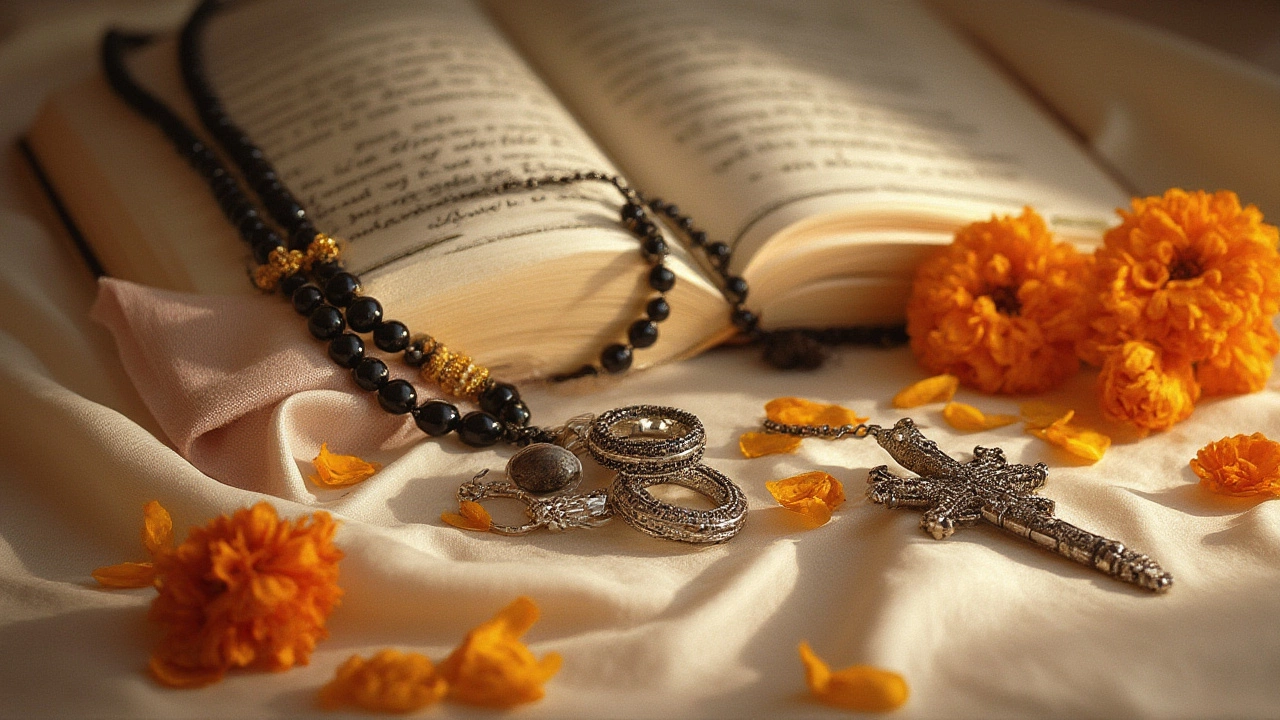
What Happens When Traditions Mix? Christian Views on Mangalsutra
Picture a Christian woman in India who grew up seeing friends and neighbors wear the mangalsutra. Does she wear one after marriage? Depending on her community, she might! Plenty of Indian Christian brides (especially from the south) blend local customs with their faith. Sometimes a pastor will bless a mangalsutra along with the wedding bands. Some Catholic and Protestant families skip it entirely and stick to rings. Others use both. There is no hard-and-fast rule in most Christian denominations about the mangalsutra; it usually depends on personal or family tradition.
Confused? You’re not alone. Many couples chat with their pastors before making a choice about wedding symbols. Some communities see the mangalsutra as cultural, not religious—which means it’s fine, as long as it doesn’t replace your commitment to each other and to God. Others skip it, especially if they want their wedding to feel more in line with traditional Western Christian rituals. Going by the Bible, there’s certainly no instruction forbidding—or requiring—it.
Here’s where things get interesting. In some interfaith weddings, like when a Christian marries a Hindu, you’ll often see a creative blend: the Christian bride wears both the mangalsutra and a ring. Nobody seems to mind—as long as the marriage is built on mutual respect and understanding. In fact, some modern mangalsutra designs even look a lot like necklaces anyone might wear, leaving it open to interpretation. The truth is, people bend tradition more than you’d expect, and that’s not always a bad thing!
Tips for Couples: Navigating Faith and Tradition
If you’re stuck in the middle—wondering what to do at your own wedding—here’s what actually happens on the ground. There’s no “one size fits all.” The Bible doesn’t talk about mangalsutra, but it does talk a lot about love, respect, and honoring your partner. If the mangalsutra feels meaningful and you want to include it, go for it. If you’d rather not, that’s perfectly fine too. The real message is about the bond, not the beads.
Couples in mixed marriages often discuss this deeply before the big day. Here’s a simple checklist to help decide what to do:
- Talk honestly with each other and your families about what each symbol means to you.
- If faith is important to you, ask your pastor or spiritual guide if they have advice or rules.
- If you choose to include the mangalsutra, consider having it blessed during your ceremony.
- Look at your family’s traditions. Is the mangalsutra just a custom, or does it clash with your beliefs?
- Remember: a symbol is only as meaningful as you make it. Focus on what it means to your relationship.
For those who love numbers: A 2023 survey by the Indian Christian Wedding Council found that 58% of Indian Christian brides still wear a mangalsutra after marriage, especially in Maharashtra, Tamil Nadu, and Karnataka. But in northern states, that number drops below 10%. Yet, 95% of these couples said their marriage felt "complete" with either symbol. Here’s a quick look at where traditions overlap and differ:
| Tradition | Symbol | Region/Followers |
|---|---|---|
| Hindu | Mangalsutra | Pan-India (esp. Maharashtra, Tamil Nadu) |
| Christian | Wedding Ring | Global, including India |
| Mixed/Interfaith | Mangalsutra &/or Ring | Common in South India |
So, what does the Bible say about the mangalsutra? Nothing, really. But it does care deeply about what’s in your heart—and that’s what matters most. Different cultures have different ways to mark a marriage. If the mangalsutra is your thing, embrace it. If rings feel better, go with that. Marriage is a partnership, built on respect and love—not just on a black and gold chain, or even a simple circle of gold.
The world might try to fit everyone into little boxes, but marriage doesn’t have to be that way. Ask questions, stay honest, and never be afraid to create your own traditions—maybe even mash them up until they fit you perfectly. There’s plenty of room at the table for a mangalsutra, a ring, and whatever else shows the world you two are together for life.
